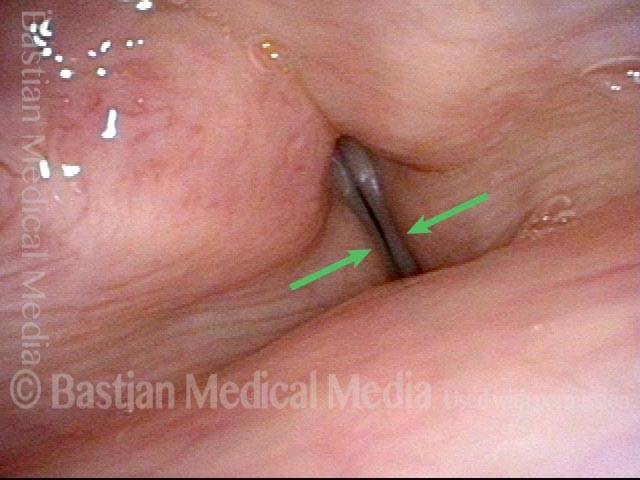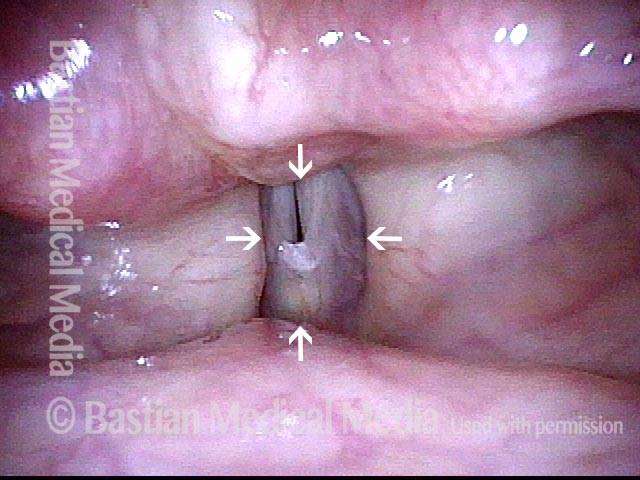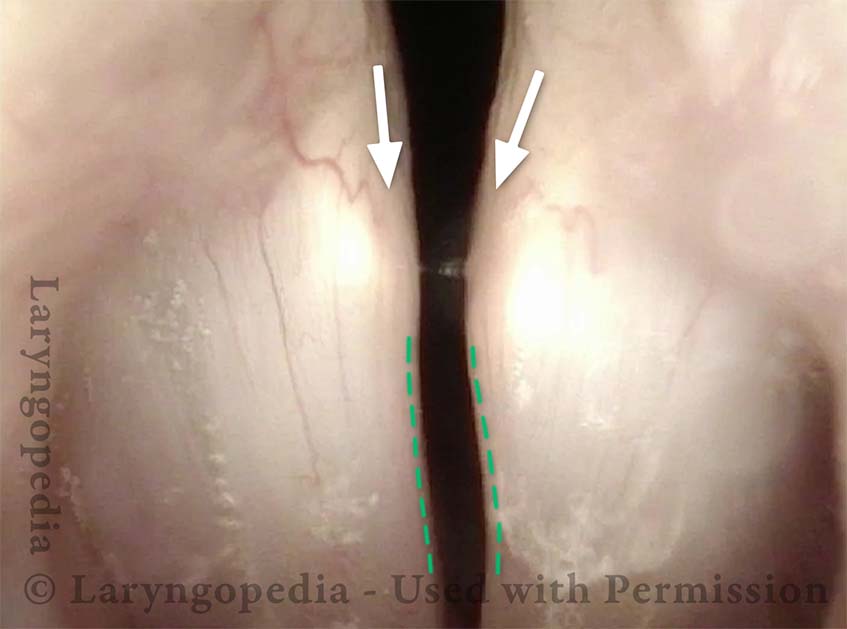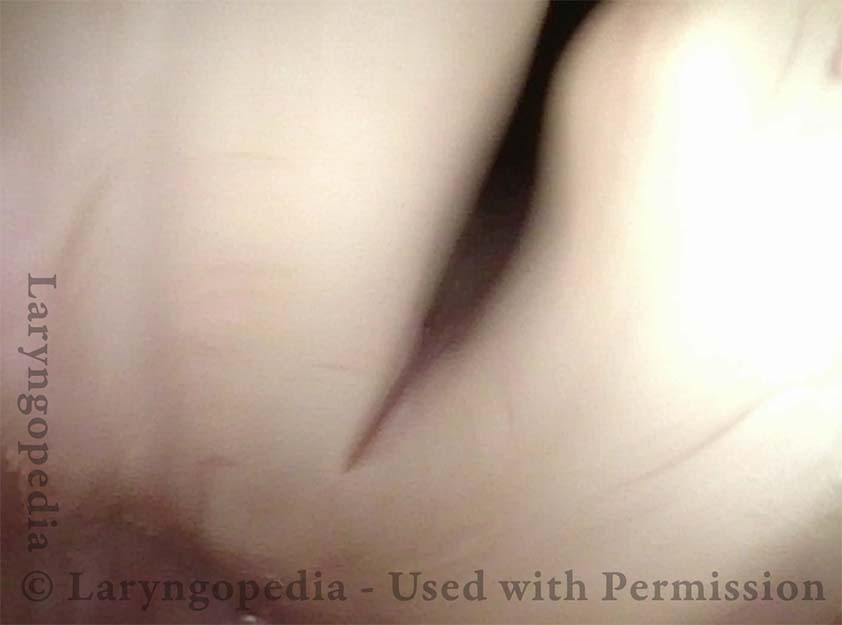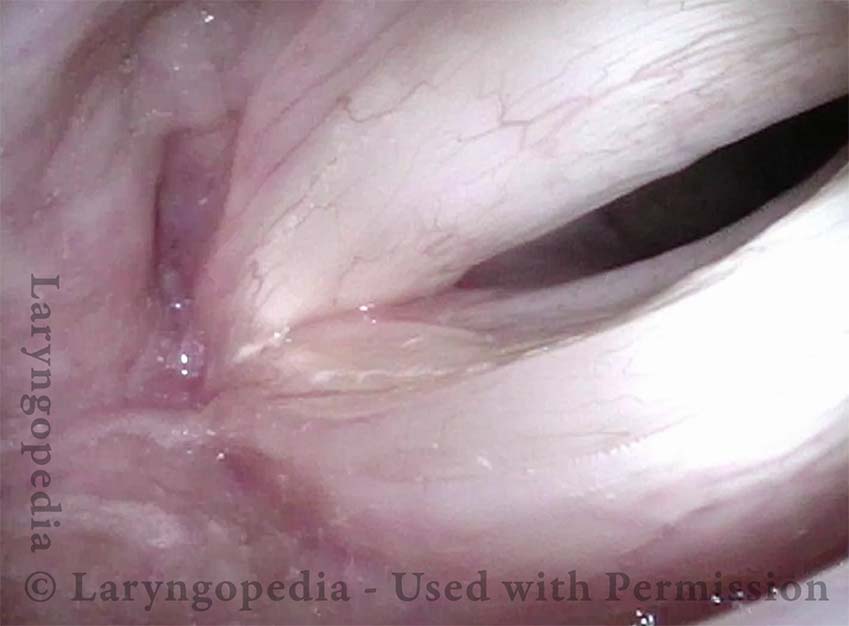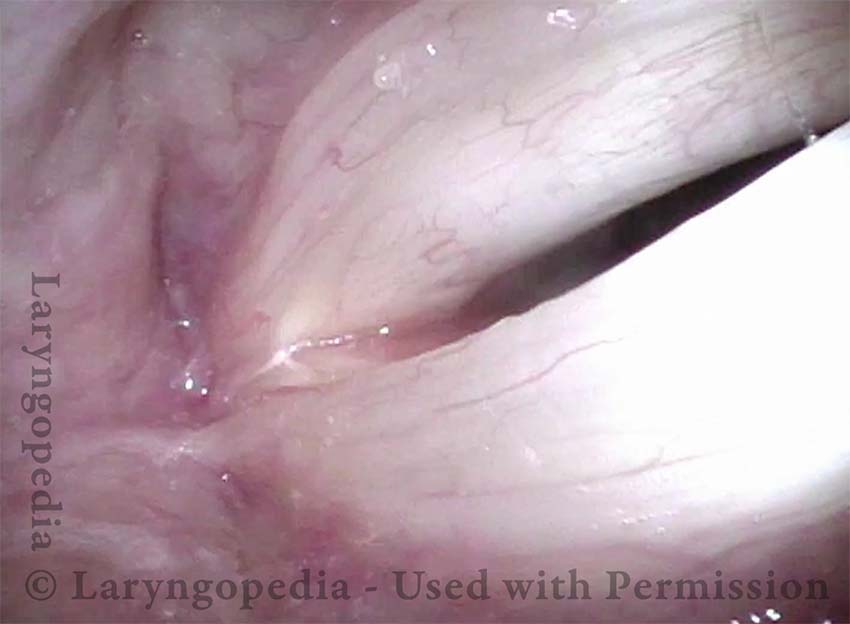Adductor Spasmodic Dysphonia (AD-SD)
Adductor spasmodic dysphonia (AD-SD) is a variant of spasmodic dysphonia in which the spasms push the vocal cords together, choking off or straining the voice. Also called strain-strangle phonation, AD-SD is the most common variant of spasmodic dysphonia, comprising about 90% of the cases. It is to be distinguished from abductor spasmodic dysphonia (AB-SD), a variant in which the spasms pull the vocal cords apart.
Classic AD-SD
In its classic variant, the adductory spasms of adductor spasmodic dysphonia are intermittent, each time clamping the vocal cords together momentarily, so that words or syllables in a person’s speech are intermittently choked out.
Tonic AD-SD
In its tonic variant, the adductory spasms are more constant and sustained than intermittent, so that instead of interrupting the person’s speech, the spasms cause a constant strained or “tight” vocal quality.
Occasionally, a person has both abductory and adductory spasms; this is called mixed AB-AD spasmodic dysphonia.
Pure AD-SD Tonic only, Moderate Severity
AD-SD (1 of 2)
AD-SD (1 of 2)
AD-SD (2 of 2)
AD-SD (2 of 2)
Adductory Spasm
Adductory spasm (1 of 2)
Adductory spasm (1 of 2)
Adductory spasm (2 of 2)
Adductory spasm (2 of 2)
SLAD-R Findings in Spasmodic Dysphonia
This man has had longstanding laryngeal dystonia causing adductory spasmodic dysphonia. More than a year before these photos, he underwent SLAD-R on the left side (right of photo). The left cord moves normally, and one can see full recovery of the LCA (lateral cricoarytenoid) muscle, but the TA (thyroarytenoid) muscle is atrophic and flaccid.
Angle of Abduction (1 of 5)
Angle of Abduction (1 of 5)
Concave Margin (2 of 5)
Concave Margin (2 of 5)
Lateral buckling (3 of 5)
Lateral buckling (3 of 5)
Mild bowing (4 of 5)
Mild bowing (4 of 5)
Greater amplitude (5 of 5)
Greater amplitude (5 of 5)
Share this article
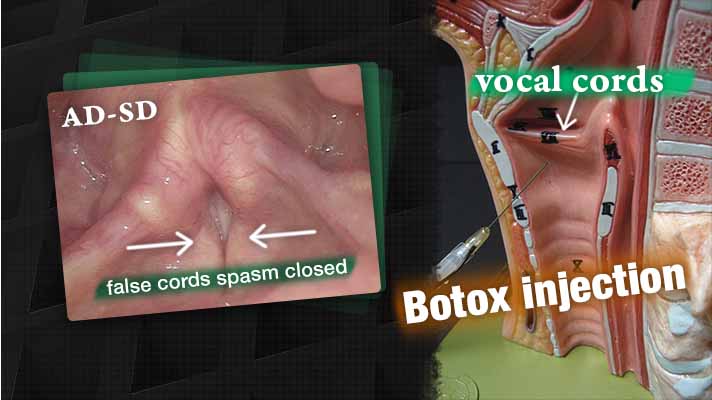
Dropped syllables? Catches in Your Voice?
A strained voice, usually with “catches” or dropped syllables or words, may be the result of a rare neurological condition called adductory spasmodic dysphonia (AD-SD).
Abnormal muscular tone in vocal cords (laryngeal dystonia) results in abnormal vocal sound (spasmodic dysphonia). This video explains the disorder. Current standard of care is botox, which can dramatically diminish symptoms with 3 or 4 treatments per year.

AD-SD Tonic Variant
In this video are audio clips and footage of the vocal cords of a patient with Tonic AD-SD. Dr. Bastian also provides examples of 4 subtypes of AD-SD.

Why Does Robert Kennedy Jr. Have a Hoarse Voice? The Answer Is SD…
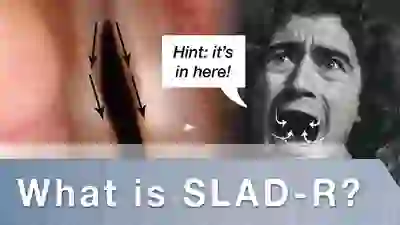
One Man’s Experience Over Time with SLAD-R
SLAD-R is a surgical alternative to ongoing “botox” injections for treatment of adductory spasmodic dysphonia. The surgery involves intentionally cutting the nerves that close the vocal cords for voice and reconnecting a different nearby nerve supply (reinnervating the nerves).
This surgery requires the patient’s willingness to endure an extremely breathy voice for many months after the procedure, while awaiting reinnervation.

